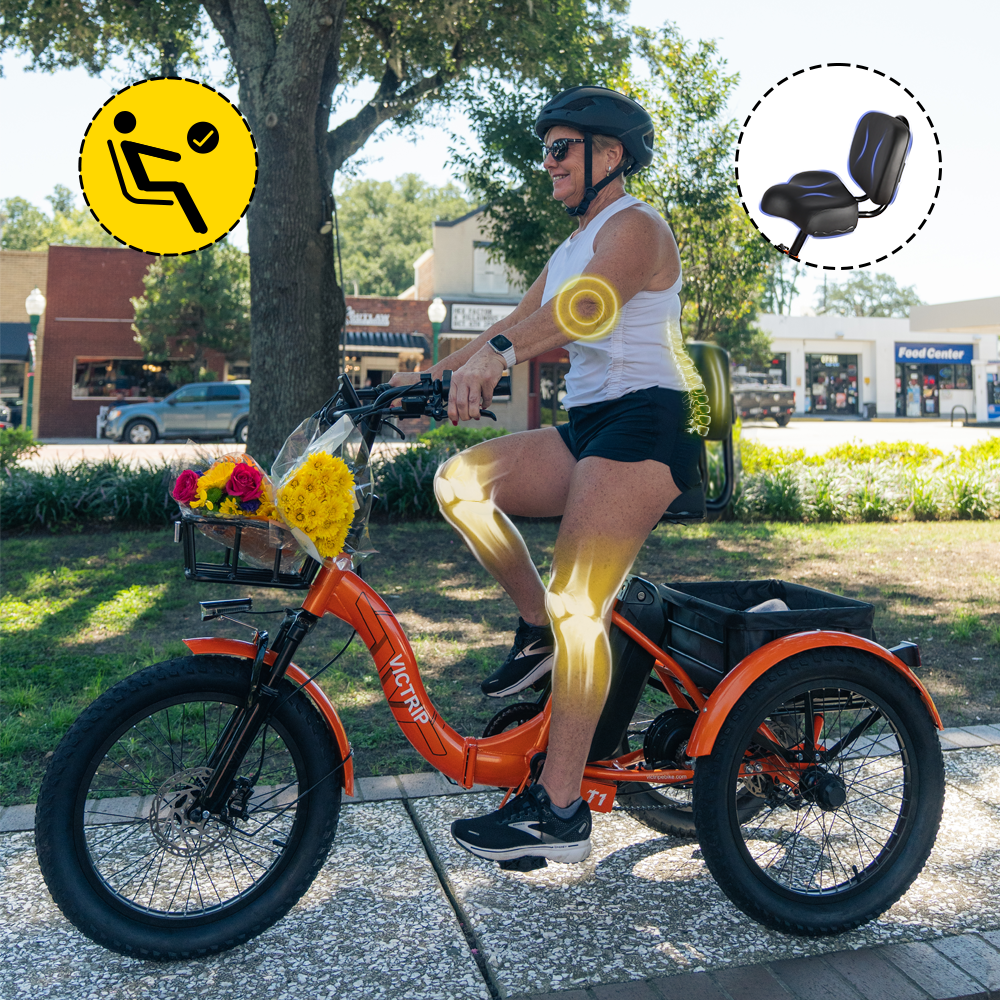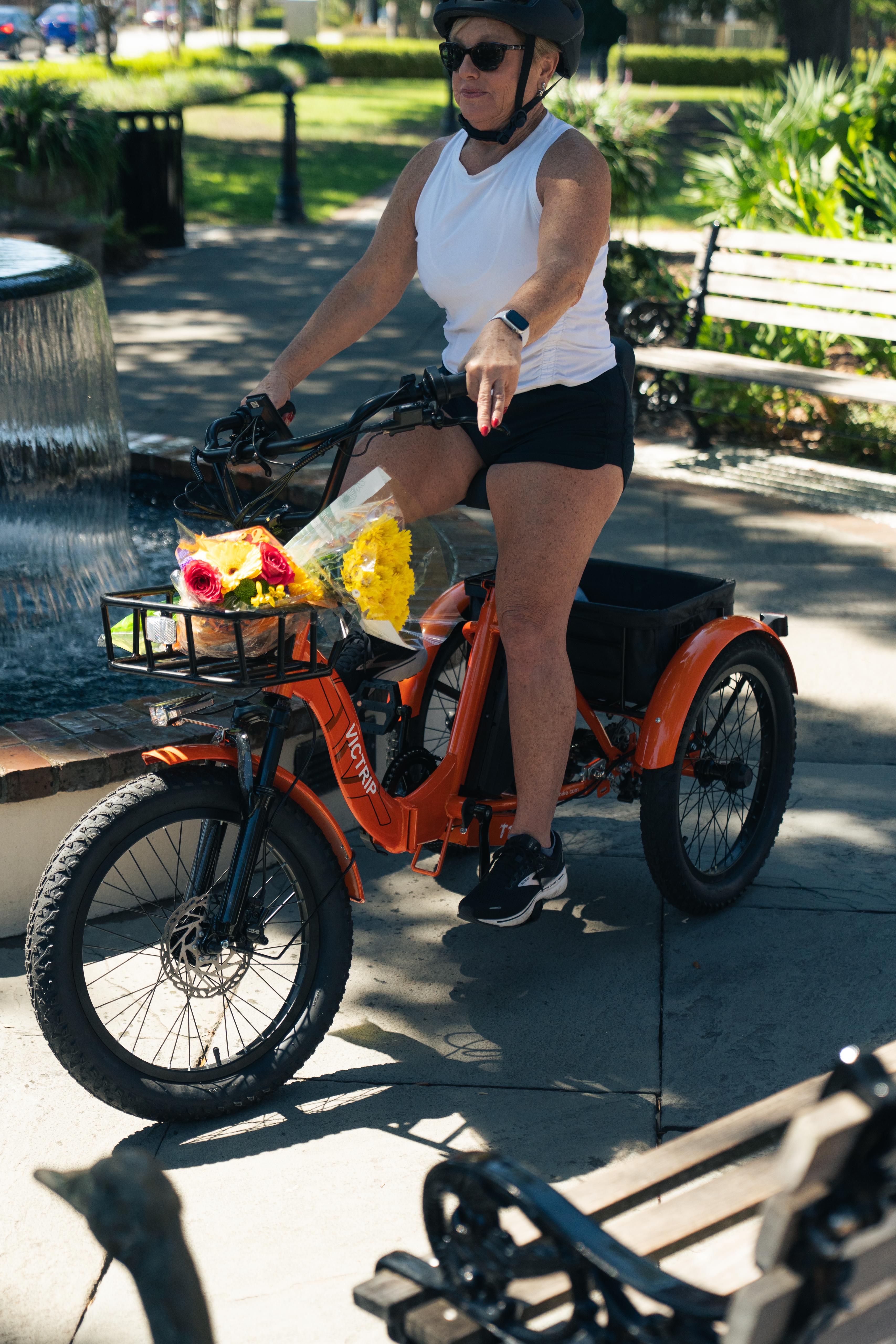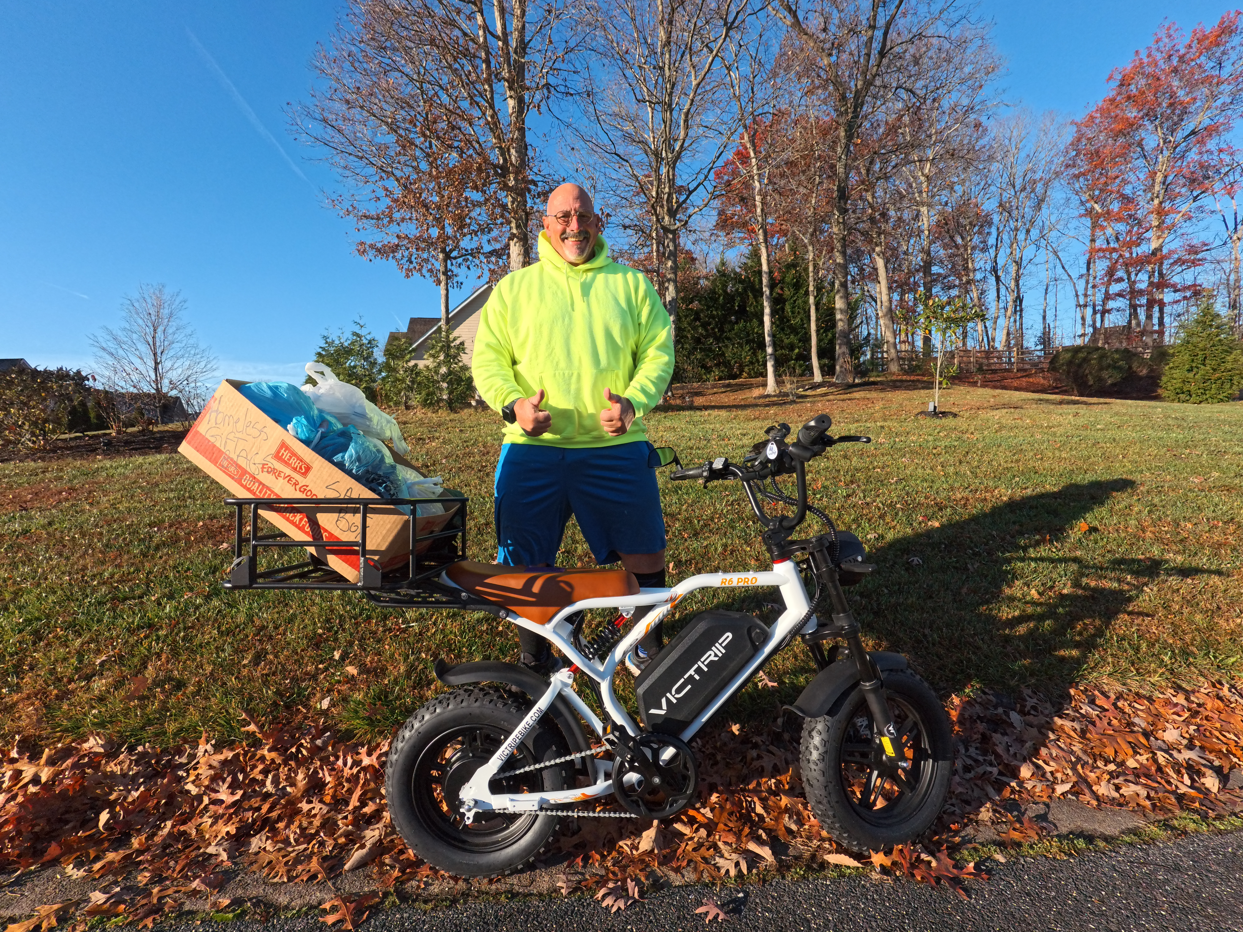Suburban commutes aren’t just “longer city rides.” They’re a patchwork of short hops, mid-length errands, scattered parking lots, and neighborhood streets where you need both range and stability. An electric tricycle solves that mix: it gives electric assistance for distance, three-wheel steadiness for confidence, and substantial cargo space for the kind of shopping or hauling suburban life demands. In short, if you live where destinations are farther apart than in dense urban cores, an electric tricycle can make your day-to-day travel easier, cheaper, and more pleasant.
The suburban commuting problem: distances, parking, and convenience
Suburban travel often includes these realities:
-
Trips are more varied — grocery, school run, a park, work errands — all in the same outing.
-
Parking is plentiful, but walking distances from lots to doors add friction.
-
Traffic can be lighter than the city, but trips are longer than walking or micro-scooter range.
-
Many households prefer to avoid starting a car for short errands (fuel cost, warm-up time, parking hassle).
Because of this mix, people want a mode that’s stable, capable of carrying cargo, safe for mixed ages, and able to travel 10–50 miles in a day without fuss. An electric tricycle checks those boxes by blending motor assistance, three-wheel balance, and practical storage.
Typical suburban trip profiles
-
Morning: 3–5 mile school run or commute to a nearby transit hub.
-
Midday: quick grocery pickup (5–10 miles round trip) with heavy bags.
-
Afternoon: errands, post office, or a park visit — short hops with stops.
-
Weekend: longer leisure rides or sizable shopping trips.
These mixed uses favor vehicles with good low-speed stability and enough battery range to cover several errands between charges.
What is an electric tricycle? Definitions and key components
An electric tricycle (e-trike) is essentially a three-wheeled bicycle with an electric motor, battery, controller, and cargo-friendly frame. The combination creates a vehicle that rides like a bike but offers car-like cargo utility and lower balance demands thanks to a third wheel.
Key components:
-
Motor: hub or mid-drive motor, rated in continuous and peak watts.
-
Battery: voltage × amp-hours determines usable energy (Wh).
-
Frame & cargo: large rear basket or platform; sometimes folding designs.
-
Brakes & suspension: stronger brakes and often front suspension for comfort and safety.
Because the design emphasizes cargo and steadiness, the electric tricycle tends to be heavier and more robust than an e-bike — that’s intentional.
Seven practical benefits for suburban commuters
Below are seven concrete advantages that make an electric tricycle a pragmatic choice for suburban riders.
1 — Stability and confidence on three wheels
Three wheels equal more stability at low speeds and when stopped. That reduces the chance of tipping when loading groceries or starting on a slope, and makes e-trikes especially good for older riders or anyone who finds balancing on two wheels tricky.

2 — Range and battery power for longer suburban hops
Many modern electric tricycles ship with larger batteries than typical e-bikes so they can handle multiple errands and longer suburban distances. For example, the VICTRIP T1 uses a 48V 20Ah LG battery (about 960Wh) and advertises up to ~80 miles per charge under favorable conditions — a real plus for multi-stop suburban days.
3 — Cargo capacity and daily utility
A trike’s cargo basket or platform means you can do a full grocery run, haul a small child’s gear, or carry multiple shopping bags without a pannier jam. Payload capacities for adult e-trikes are commonly in the hundreds of pounds, with the VICTRIP T1 rated for up to roughly 450 lbs total payload — that covers rider + cargo easily.
4 — Cost savings vs. cars: fuel, parking, maintenance
Operating an electric tricycle is dramatically cheaper than a car for short trips: electricity cost per mile is tiny, parking is often free or simpler, and maintenance focuses on tires, brakes, and battery care instead of oil changes and complex engine systems. Over months a commuter can save materially on fuel and parking fees.
5 — Accessibility and inclusivity for older riders
The e-trike’s low step-through frames, wide seats, and three-wheel stability make them ideal for riders who want independence without the balance demands of a bicycle. Communities with aging populations benefit when more people can move safely without depending on cars or rideshares.

6 — Environmental impact and community benefits
Switching errands from car to electric trike reduces tailpipe emissions and traffic congestion. On a neighborhood scale, adopting electric tricycles for short trips promotes quieter streets, cleaner air, and less curb demand.
7 — Ease of use: folding, storage, and low upkeep
Many commuter-focused e-trikes, including folding models, are engineered for compact storage in a garage or large closet. Alongside routine tire and brake checks, upkeep is straightforward compared with cars, making long-term ownership simpler.
Spotlight: VICTRIP T1 — features that matter to commuters
To make this concrete, let’s look at a representative commuter-oriented electric tricycle: the VICTRIP T1. It’s marketed as a folding adult e-trike with commuter-friendly specs and design choices that align well with suburban needs.
Key specs and what they mean
| Spec | VICTRIP T1 (advertised) | Why it matters |
|---|---|---|
| Battery | 48V 20Ah (LG cell) — ~960 Wh | Larger battery → longer real-world range for multiple errands. |
| Motor | 1000W peak (commonly 500W continuous) | Stronger motor for hill starts and hauling cargo. |
| Range | ~80 miles (manufacturer claim) | Covers most suburban daily patterns without mid-day charging. |
| Top assisted speed | ~20 mph | Fast enough for suburban roads while remaining practical and often within local e-bike laws. |
| Payload | ~450 lbs total | Accommodates rider + groceries + extras — useful for family runs. |
| Brakes | Hydraulic braking system | Improved stopping power with heavier load — important for safety. |
| Price (typical) | ~$1,299–$1,899 (retail varies) | Value proposition vs. small car or frequent rideshare costs. |
These specs show a trike built to handle the load, distance, and comfort priorities suburban commuters care about. Real-world range will vary with rider weight, terrain, and support mode chosen, but the combination of a 48V 20Ah LG pack and a robust motor makes the T1 a credible commuter tool for many households.
Comfort, safety, and tech features
The VICTRIP T1 and similar commuter e-trikes typically include:
-
Comfortable, wide seating and adjustable posture.
-
LED lighting for visibility and safety.
-
Digital displays with speed, battery state, and assist level.
-
Folding or compact storage features for small garages.
These features reduce friction in daily use, which is essential if the goal is to replace short car trips with the trike.
TOP PICK

VICTRIP® T1 Foldable Electric Tricycle
Where it excels and realistic expectations
An electric tricycle like the VICTRIP T1 excels on flat-to-moderately-hilly suburban routes, for grocery runs, and multi-stop days. But: if your commute is 30+ miles each way at sustained highway speeds, an e-trike may be less practical than a car or high-speed electric bike. Also, large batteries add weight — the vehicle is heavier to move without power. Still, for most suburban patterns it’s a strong fit.
Comparing the electric tricycle to car, e-bike, and scooter alternatives
-
Vs. car: Far cheaper to run for short errands, easier to park, and environmentally cleaner — but less weather protection and lower top speed.
-
Vs. e-bike: More cargo and stability, but bulkier and slower to fold or carry.
-
Vs. scooter: More useful for cargo and comfort; scooters are lighter and sometimes faster for solo short trips.
The right choice depends on the rider’s priorities — if stability and cargo are top needs, an electric tricycle is often the better match.
Use cases and day-in-the-life scenarios
-
Grocery run: Park the trike next to the store, load the rear basket, and return home without lifting heavy bags into a car.
-
School & errands combo: Drop off a child, swing by the post office, and pick up dry cleaning — all within a 10–20 mile loop that’s gentle on the battery.
-
Mixed-mode commute: Ride to a transit station, fold or secure the trike, then hop a short train for downtown work.
-
Weekend projects: Haul small yard supplies or farmers-market finds—no car needed for many household tasks.
These everyday patterns showcase how an electric tricycle can replace many short car trips.
Buying tips, maintenance, and legal considerations
-
Test ride: Try the model with your typical cargo — comfort and handling vary with load.
-
Check battery warranty and BMS: UL-certified cells (e.g., LG) and a robust battery-management system matter for longevity and safety.
-
Inspect brakes and lights: Heavier vehicles need strong hydraulic or disc brakes and visible lighting.
-
Know local laws: Speed and power limits for e-bikes and trikes differ by state/city; confirm whether the vehicle requires registration or a license.
-
Storage: If you live in an apartment, measure storage space — folding models help but still require room.
Maintenance is straightforward: keep tires properly inflated, service brakes annually or as needed, and follow battery care guidelines to maximize life.
Conclusion: Who should consider an electric tricycle and why
If you live in the suburbs and your days are built from multiple short-to-mid-length trips, an electric tricycle is a compelling option. It’s stable, cargo-friendly, economical to operate, and inclusive for a wide age range of riders. Models like the VICTRIP T1 specifically target commuters with a large battery, robust motor, and built-for-purpose cargo capacity — features that translate to daily utility and fewer car trips. If your priorities include reducing fuel costs, simplifying short errands, and increasing mobility without sacrificing safety, an electric tricycle is worth serious consideration.
FAQs
Is an electric tricycle safe for seniors?
Yes. The three-wheel design greatly reduces tipping risk and many commuter trikes include low step-through frames and wide seats that add comfort and accessibility for older riders. Always test-ride and use proper helmet and light/reflector gear for maximum safety.
How far will an electric tricycle go on a single charge?
Range depends on battery size, assist level, rider weight, terrain, and speed. Some commuter trikes with a 48V 20Ah battery (about 960Wh) can advertise up to ~80 miles under ideal conditions; real-world daily use often ranges lower, so expect 25–60+ miles depending on variables.
Do I need a license or registration?
Regulations vary. In many U.S. jurisdictions, e-trikes with speeds limited to ~20 mph and moderate motor power are treated like e-bikes and don’t need registration; higher-power models may be regulated differently. Check your local DMV or municipal code.
Can I carry groceries and a passenger on an electric tricycle?
Most commuter trikes are designed for rider + cargo. Payload specs (e.g., ~450 lbs on some models) indicate the total capacity — always stay within the manufacturer’s limit and distribute weight safely.
How long does the battery take to charge?
Charging times typically range from 4–8 hours depending on charger and battery capacity. Fast chargers may shorten this, but check manufacturer recommendations to protect battery life.
What’s the lifespan of an e-trike battery?
With proper care, high-quality lithium batteries often retain useful capacity for several years (commonly 2–5 years depending on use). Following best practices — moderate charge cycles, avoiding extreme temperatures — helps maximize lifespan.




Share:
Do You Need a License for a Moped
E-bike Battery Care During Winter: Everything You Need to Know